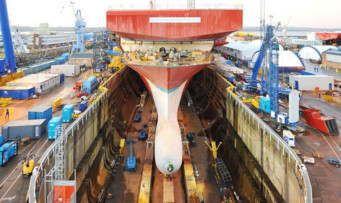Fife must capitalise on successes such as BiFab, Babcock and Samsung Heavy Industries in the energy sector if it is to boost its external reputation as the best place to start and grow a business and attract further investment.
That is the view of political and business leaders in Fife who have given cross-party backing to an ambitious 10-year economic vision which aims to find new sources of growth for Fife while attempting to recover from the global financial crisis.
Development of Fife as a centre of excellence for energy and renewables, investment in tourism and transition of business to a low carbon economy have all been identified as key areas as Fife aims to reduce reliance on shrinking public sector employment.
However, the vision also recognises that a well-educated and skilled workforce is crucial and that Fife will not flourish without more innovative and successful companies and the strengthening of jaded town centres.
Now Fife Council’s Executive Committee has granted approval to the Fife Economic Strategy 2013-2023 which sets out the strategic priorities for Fife Council and the Fife Economic Partnership as they aim to grow a vibrant post-recession economy through sustainable economic growth.
The Fife Economic Strategy sets out the challenges and the opportunities faced by the Fife economy in 2013.
As the third largest council area in Scotland by population, Fife faces “significant economic and social challenges” to recover from the global financial crisis and return to growth.
These challenges include economic and employment growth across a broader range of sectors to remove reliance on public sector employment, the report states.
More businesses and an increase in self-employment are required.
In the foreword to the Fife Economic Strategy, Fife Council leader Alex Rowley and Chris Parr, chairman of the Fife Economy Partnership, outline their ambition to transform challenges into opportunities for all.
They say: “We want to create an environment for economic growth that supports businesses in Fife with growth potential, regardless of size or sector.
“We believe that in the context of slow economic growth and higher levels of unemployment, Fife is more likely to enhance the performance of its local economy by aligning its employability and economic development agendas and focusing on the development of a skilled, educated and creative workforce.
“Although Fife’s overall unemployment rate is close to the Scottish average, this masks inequalities at a settlement and neighbourhood level.”
The continue: “Both the context and challenge for Fife for the foreseeable future is one of change.”
“The next decade is about finding new sources of growth new skills, new markets, new ways of reaching customers, new products and services whilst recognising that Fife’s people are its greatest economic asset and the source of its ambition, innovation and enterprise.”
